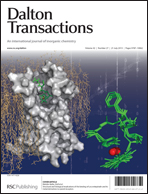Flower-like BaTiO3/Fe3O4 hierarchically structured particles composed of nano-scale structures on micro-scale materials were synthesized by a simple solvothermal approach and characterized by the means of X-ray powder diffraction (XRD), scanning electron microscopy (SEM), transmission electron microscopy (TEM), magnetic testing and rotary viscometer. The influences on the morphology and structure of solvothermal times, type and amount of surfactant, EG : H2O ratio, etc. were studied. Magnetic testing results show that the samples have strong magnetism and they exhibit superparamagnetic behavior, as evidenced by no coercivity and the remanence at room temperature, due to their very small sizes, observed on the M–H loop. The saturation magnetization (Ms) value can achieve 18.3 emu g−1. The electrorheological (ER) effect was investigated using a suspension of the flower-like BaTiO3/Fe3O4 hierarchically structured particles dispersed in silicone oil. We can observe a slight shear-thinning behavior of shear viscosity at a low shear rate region even at zero applied electric field and a Newtonian fluid behavior at high shear rate regions.

You have access to this article
 Please wait while we load your content...
Something went wrong. Try again?
Please wait while we load your content...
Something went wrong. Try again?


 Please wait while we load your content...
Please wait while we load your content...